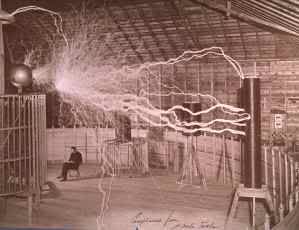A
Anonymous
Guest
When I was about 11 or 12 years old, my sister and I were visiting a neighbor a few houses away from our house. They had three foster children, and one of the girls was my age while the other was my sister's age (8 or 9, at that time). The four of us were standing near the front door; the screen door was closed, but the main door was open (it was summertime). I'm not sure why we were standing there, but given that it was a summer day I think we were probably talking about what we wanted to do and where we wanted to go (ride bikes down the street, swim in their pool, etc.).
While we were talking, this big white ball of energy came right in through the screen front door -- I don't know where it came from, because we didn't see it until it came inside. It went right in between us, with my sister and I on one side of it and our two friends on the other. We couldn't see our friends faces through it, and they later told us they couldn't see our faces through it either (it passed by in the air, at approximately our face-level). :shock:
Luckily, we didn't try to touch it -- we didn't know what it was, and to be honest I'm still not sure, but ball lightning seems the most likely explanation. I got no feeling from the ball, as I might have if it were a spirit. I'm glad we didn't touch it, because from what I've read and heard, if it was ball lightning, we could have gotten one hell of a shock. It did seem to sort of have intention or direction -- once it passed us, it moved through the living room, then meandered through the kitchen, through the small laundry room, and then out through the back door (located in the laundry room). I've read that ball lightning often seems to have intent. None of us said anything until it was gone, then it was "What the heck was THAT??!?".
Does ball lighting come in various sizes? This one was maybe about the size of a bowling ball, and was definitely spherical in shape.
Also, it wasn't storming the day this happened, but being summer I'm wondering if ball lightning can come from or be a form of heat lightning? It may have stormed later in the day, but I don't remember....but I've remembered the experience for over 20 years!
While we were talking, this big white ball of energy came right in through the screen front door -- I don't know where it came from, because we didn't see it until it came inside. It went right in between us, with my sister and I on one side of it and our two friends on the other. We couldn't see our friends faces through it, and they later told us they couldn't see our faces through it either (it passed by in the air, at approximately our face-level). :shock:
Luckily, we didn't try to touch it -- we didn't know what it was, and to be honest I'm still not sure, but ball lightning seems the most likely explanation. I got no feeling from the ball, as I might have if it were a spirit. I'm glad we didn't touch it, because from what I've read and heard, if it was ball lightning, we could have gotten one hell of a shock. It did seem to sort of have intention or direction -- once it passed us, it moved through the living room, then meandered through the kitchen, through the small laundry room, and then out through the back door (located in the laundry room). I've read that ball lightning often seems to have intent. None of us said anything until it was gone, then it was "What the heck was THAT??!?".

Does ball lighting come in various sizes? This one was maybe about the size of a bowling ball, and was definitely spherical in shape.
Also, it wasn't storming the day this happened, but being summer I'm wondering if ball lightning can come from or be a form of heat lightning? It may have stormed later in the day, but I don't remember....but I've remembered the experience for over 20 years!


 Somebody tell me ì'm wrong,but haven't i seen film of Nikola Tesla sat in a room,all unconcerned,as his home made ball lightning bounces all over? :shock:
Somebody tell me ì'm wrong,but haven't i seen film of Nikola Tesla sat in a room,all unconcerned,as his home made ball lightning bounces all over? :shock: